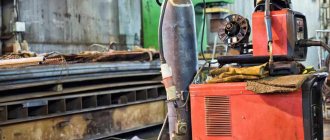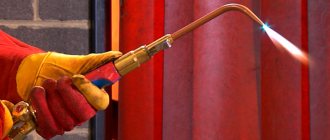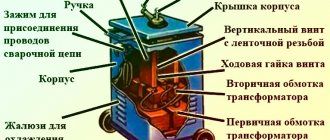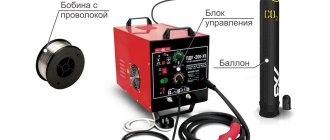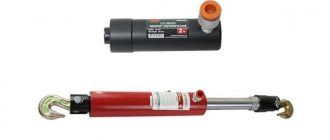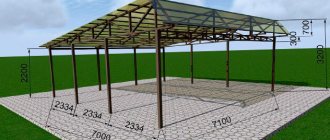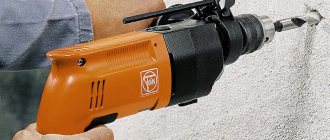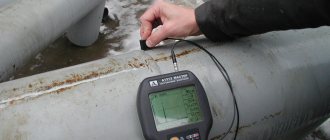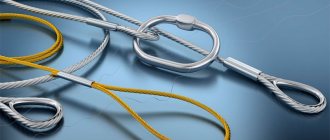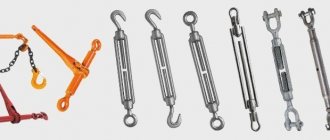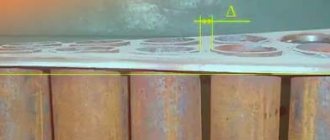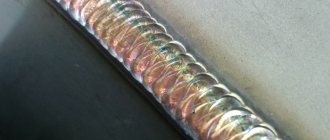Of all types of camp fire, gas is perhaps the easiest and fastest way to provide hot food for a single tourist or a small team. High efficiency, the ability to quickly regulate the heating intensity, and readiness for work in the shortest possible time have allowed gas equipment to take a leading position in the camp kitchen of solo travelers. It is also worth noting the relative environmental friendliness of the gas: a minimum of soot (in a good burner + gas system there should be none at all), the absence of scorched spots on the natural surface, the empty cylinder is easily crushed and disposed of along with household waste in the community.
Types of travel gas cylinders
Threaded cylinder (“Euro”, Epi-gas)
The most common type of cylinder in the tourist environment. Its advantages are obvious: the wide bottom of the container forms a fairly stable support, which allows the use of ultra-light burners, the threaded connection is more reliable than collet and bayonet connections, various manufacturers produce a wide range of gas mixtures.
Threaded gas cylinders with a capacity of 100, 230 and 450 gramsIn addition, the design allows the introduction of additional elements that facilitate the transition of gas from a liquid to a gaseous state at low temperatures. If necessary, you can find cylinders on sale that operate in conditions down to -22°C. All manufacturers have the same line of volumes, and depending on the internal pressure, threaded cylinders can contain 100-113, 220-230 and 450 grams of gas.
Collet cylinder (“Dichlorvosnik”)
The most common type of household gas cylinder outside the tourist environment. “Dichlorvosnik” can be found in construction hypermarkets, hardware stores, and at local markets in remote areas. These cylinders are used in construction, hobbies and, of course, tourism.
A feature of this type of cylinder that requires attention when working with gas burners with flexible hoses is the gas intake tube inside. It is located at an angle, and in order to avoid liquid gas entering the burner, the cylinder must be in the correct position. The first is obvious, vertical. The second, horizontal one, will be indicated by the slot on the “collar” of the cylinder: it should look up.
Working positions of the collet cylinder. In the third photo you can clearly see the tube that causes them.The main advantage of collet cylinders is their low price (about three times cheaper than a threaded cylinder with the same amount of gas). Disadvantages - low connection reliability, the need to fix the cylinder, a small range of operating temperatures of the produced gas mixtures (I have only met an “all-season” mixture that works satisfactorily down to 0°C)
There is one more disadvantage, which is not obvious: the protective caps of such cylinders tend to fly off in a backpack, which creates the risk of accidentally pressing the protruding part of the valve and losing valuable fuel. The problem can be solved simply - each cap is glued to the cylinder with a ten-centimeter piece of electrical tape or adhesive tape.
Others
The Campingaz bayonet mount, the MAPP threaded standard and pierceable cartridge cylinders are not widely used in the Russian tourist environment. You should be aware of their existence and, when planning a trip to America and Europe, check in advance which type of gas cylinder is most common in a particular country. The fact is that gas is prohibited for air transportation, and you will have to buy it locally.
Best models
We have selected the 7 best gas cylinders for you. When creating the selection, we were guided by their quality and price, as well as their purpose. In the list you will find both small cylinders for simple hikes and picnics, and cylinders for extreme travel, mountaineering and other tasks.
Tourist Standard TBR-230
This cylinder is one of the most versatile. Suitable for different temperatures (from -23 to +23). Threaded fastening. It contains a mixture of three gases that will burn steadily for a long time. The cylinder is light in weight and has a reasonable price.
| Mounting type | Thread |
| Volume | 230 ml |
| Weight | 370 grams |
| Price | 250 rubles |
Tourist Gas Standard 450
The same cylinder as the previous one, but of large volume. Suitable for tourists who will be far from shops or just going on long trips.
| Mounting type | Thread |
| Volume | 370 ml |
| Weight | 670 grams |
| Price | 500 rubles |
Pathfinder PF-FG-450
Inexpensive large volume cylinder. Positioned as all-season, suitable for not too harsh winters. Threaded type of fastening.
| Mounting type | Thread |
| Volume | 450 ml |
| Weight | 650-700 grams |
| Price | 350 rubles |
Perune Lightning-230 All Season Fuel Mix 230g
This is a gas cylinder with a bayonette type mount. Compact cylinder for all-season use. Withstands low and high temperatures. Light weight and volume - convenient to take on short hikes.
A few words about gas mixtures used in tourism
Propane and butane are most often found in cheap collet cylinders. The usual proportions are 70/30. This mixture is very sensitive to low temperatures, but works well with burners equipped with a mixture preheating system;
Isobutane is added to the above components to increase the stability of gas equipment at low temperatures. Together with the special design of the inside of the cylinder, this allows the burners to be used even in severe frosts.
Step-by-step instructions for replacing the valve
The new control valve is not fixed to the cylinder with a clean thread. It is imperative to use sealing materials: sealants or fum tape.
Checking tightness and completing work
Upon completion of work to replace the valve on the gas vessel, it is necessary to check the tightness of the newly assembled connections. To do this, they use a method that has been proven for decades - applying soap foam.
Checking tightness and completing work
If the joints are assembled poorly, then bubbles will form at the point of gas leakage and therefore work will need to be done to reassemble them anew.
Types of camping gas equipment
Tiles
The most common type of gas burners in Russia, used by tourists, fishermen, hunters, mushroom pickers and even summer residents, are stoves powered by a collet cylinder. In appearance, they really resemble a regular burner on a city gas stove. Most of them are very cumbersome and are suitable for summer cottages and car camping, but not for hiking, when you have to carry all the property “on your own two feet.” But we will still consider the most compact tiles, popularly called “crab” and “tulip”.
The first is so named for the characteristic color of the body and external resemblance to an arthropod, the second for its wind protection device, similar in appearance to flower petals. This is probably the simplest and cheapest camping gas equipment that allows you to comfortably cook food and make coffee far from civilization. Such burners operate from cheap collet cylinders that are widely available on sale.
Advantages: low cost, stability, piezo ignition, built-in wind protection for the “tulip”; Disadvantages: excess weight and volume, low quality of workmanship, low reliability of connecting the cylinder.
Burner nozzles for threaded cylinders
The lightest and most compact burners, since the support of the structure in this case is a gas cylinder. Such burners are suitable for singles and doubles, but are of little use for group tourism. The point is the restrictions on the size of the dishes imposed by the height of the structure. The larger the pot, the less stable the system resting on the bottom of the container will be.
The BRS-3000T burner, which weighs only 25 grams, became a kind of record holder in the class. True, the design turned out to be quite sensitive to damage. Now the hype around it has died down, and we can say that the weight of a durable and reliable threaded burner starts at 45 grams. These are, for example, the MSR Pocket Rocket 2, Kovea Supalite Ti, Fire Maple Hornet and Polaris models. There are several more burners from Chinese manufacturers, the weight of which ranges from an excellent 45 to an acceptable 100 grams, but I cannot definitely recommend them for purchase.
Advantages: lightness, compactness, reliable connection to the cylinder; Disadvantages: low stability of the system based on a cylinder (partially solved with the help of adapters and special stands for cylinders), inconvenience of using dishes with a volume of more than a liter.
Burners with hose
The most versatile choice for group hikes. Typically, these burners have stable supports and wide pan feet. The hose connecting the burner to the cylinder allows you to conveniently position the latter, warm your hands with warmth, or turn it over (relevant for burners equipped with a fuel preheating system).
The preheating system, which some burners are equipped with, is a tube that runs in a loop in close proximity to the burner. The mixture in a liquid state, entering the hose from a cylinder turned upside down with the thread, quickly turns into a gaseous state from the heating of the tube and, already heated, is supplied to the burner. This technique makes it possible to safely and comfortably use all-season gas mixtures at low temperatures.
Ecos Hurricane burners with wind protection and Track Sharp with preheating of the gas mixtureFlexible connection is both a strength and a weakness of such systems. Pressure at the bending points, accidental overheating, and manufacturing defects lead to a violation of the tightness of the connection or destruction of the material from which the liner is made, which can lead to unstable operation or even force the group to leave the route. Therefore, it makes sense to duplicate a camp fire source, since the weight of the burners with a hose allows this: for example, the Blade model from Fire Maple, made of titanium, will weigh down the group by only one hundred grams.
Advantages: versatility, stability, some models have built-in wind protection and fuel preheating; Disadvantages: with careful handling there are almost none.
Integrated Cooking Systems
This story is no longer about burners, but about cookware: by using a radiator at the bottom of the pot, good wind protection and mechanically connecting the pot and burner into a single whole, the inventors of JetBoil managed to reduce gas consumption to a minimum. Now similar systems are produced by many equipment manufacturers - Kovea, Fire Maple, MSR and others, and the name jetboil has become a household word, like a photocopier or a jeep. Perhaps this is an ideal option for a single tourist or a group of two or three people using freeze-dried food or canned food in retort packaging as a food source.
By the way, I tried such a system for cooking food on a hike using a thermos; a little later I will definitely tell you more about this interesting experience. It is also suitable for specific nutrition with a variety of cereals with sausage and lard, which I practiced a year ago (you can read about it here). In addition, most systems I know of, including my FireMaple X3, allow you to use the burner separately from the included pot, like a regular attachment. For this purpose, the kit includes a stainless steel nozzle. Thus, even if you have a ration of boiling water, you will have something to put a frying pan of mushrooms or fish on.
Advantages: stability and safety of use, windproof, economical; Disadvantages: quite large volume due to the radiator, difficulties with preparing anything other than boiling water and soups, difficulties with washing.
Design features and operating principle
Burners vary in design - from basic devices with a nozzle to more complex mechanisms equipped with an air supply device and piezo ignition.
Let's consider the design of a torch designed for welding metal.
Burner design: 1 – oxygen hose connection nipple; 2- nipple for connecting an acetylene hose; 3 – oxygen supply valve; 4 – fuel supply valve; 5 – oxygen channel; 6 – acetylene channel; 7 – check valve; 8 – injector; 9 – mixing chamber; 10 – body; 11- union nut; 12 – seal; 13 – support spring ring; 14 – groove; 15 – tip; 16 – mouthpiece; 17 – additional channel for oxygen; 18 – sealing surface (+)
The design with an injector and check valve increases work productivity and reduces fuel consumption.
Almost all portable household appliances belong to the so-called injection burners, when air is naturally sucked into the burner to support the flame.
Inside, in a special chamber, fuel is mixed with air, as a result of which the fuel ignites after a spark is given.
With the help of adjustment, which not all burners are equipped with, you can achieve the desired size and power of the torch. High-temperature devices have a bluish-blue flame, low-temperature devices have a yellow-orange flame.
From the mixing chamber, the mixture of gases enters the nozzle-nozzle, where it is distributed through the channels. At the end of the structure, at the point where the torch is formed, there are fire holes - the ends of the channels.
Options for nozzles by structure: ring, slot, tubular.
Adapters
A variety of adapters allow you to use burners with cylinders that were not originally intended for them. For example, the most common case is the need to connect a cheap collet cylinder to a threaded torch with a hose. To do this, an adapter is connected to the burner connector, and gas is connected to it. Such adapters come with a support that helps fix the capricious fuel container in the desired position.
The downside of all adapters is the formation of an additional “weak point” in the system. Burners with a hose already have three of them: the connection between the hose and the burner, with the flame regulator, and the thread between the regulator and the cylinder. And with the use of an adapter, a fourth is inevitably formed. To reduce risks, I use a thread-collet adapter with a support for the torch nozzle. This design is more stable than directly connecting the burner to a threaded gas cylinder, since the fuel container serves as an additional support point. At the same time, there are only two connections in the resulting system: the thread between the burner and the adapter and the connection with the cylinder.
Types of gases
Gases used in welding are divided into active and inert, among the active there are reactive and neutral. Moreover, the active gas can be reactive under some conditions and types of welding, and neutral under others.
All of them are pumped into special welding cylinders. Before ordering gas for work, you should familiarize yourself with the types of standard markings, the possibility of subsequent filling of cylinders with welding mixture, and their equipment.
All gases are pumped into cylinders under pressure. Therefore, containers are made of steel that does not have seams. Only at a pressure less than 3 MPa can gas containers be welded or have a seam.
In welding practice, such types are not found. Gases for welding are supplied only in cylinders without seams with special shut-off valves. Fundamentally different valves are designed for different gases.
Cylinders with gaseous flammable hydrocarbons - acetylene, propane, butane and others - are equipped with valves with left-hand threads.
Cylinders with all other gases, including oxygen, nitrogen, carbon dioxide and inert gases, are equipped with valves with right-hand threads.
The difference in the directions of rotation of the valve eliminates the possibility of accidental errors, accidents during welding or other use of gas.
Gas cutters, lamps, heaters
Gas cutters are widely used in construction, but in order to come up with a use for them on a hike, you will have to try. The only thing I can think of is helping to start a fire in winter or in wet weather.
Lamps powered by gas cylinders are more of a camping equipment. Taking into account the gas consumption of 40-80 grams per hour of operation of the device, a regular electric flashlight with a pair of spare batteries seems to be a much more convenient and lightweight option.
The situation is almost the same with gas heaters. The best use for them is camping in cold weather, winter fishing with a tent, and hunting. Gas consumption ranges from 60 grams per hour for compact tent models to 120 for powerful systems capable of heating rooms up to 15 square meters. Some, like the Kovea Fire Ball, allow you to cook food while heating the space and can be an alternative to a stove for winter weekend camping trips.
For dealers
We invite you to cooperate!
We are actively developing our dealer network and invite all regions of Russia and the CIS countries to cooperate.
We are interested in long-term cooperation and invite you to participate in the promotion and sale of our product in your territory on very favorable terms.
Our partners receive exclusive terms of cooperation: deliveries in the shortest possible time, minimum prices and professional support from our specialists.
To consider your company as a regional dealer and clarify the details of our conditions, please contact us by phone or fill out the feedback form.
We will help you achieve successful sales!
Safety precautions
Everything related to open fire is a source of increased danger for both humans and nature. A fire, burner, or heater require constant attention and careful handling. Nature is as fragile as it is powerful, and according to world statistics, 90% of forest fires are caused by humans.
This is especially true for gas appliances operated in or near a tent. It is necessary to ensure a flow of fresh air into the room: oxygen is consumed very quickly during work, and the danger of carbon monoxide poisoning is extremely high. Under no circumstances should flammable or explosive objects, such as fuel or aerosol cans, be placed near a working fire source. It is strictly forbidden to dry wet things over a burner or gas heater - once they dry out, they can easily catch fire. Failure to comply with safety precautions when handling fire can cause not only damage to equipment, but also the death of an unlucky tourist.
Rexant GT-19
- Fuel type – propane-butane mixture.
- The connection is collet.
- Flame temperature – 1400 ºС.
- Gas consumption – 80 g/hour.
- Overall dimensions – 153x40x57 mm.
- Weight – 135 g.
Rexant GT-19 is a compact and convenient burner designed for connection to standard gas cylinders using a collet connection. The model can be used for a variety of jobs involving flame processing, including removing old paint, lighting fires, barbecues and stoves, soldering pipe connections, and insulating wires using heat-shrinkable materials. Thanks to the built-in piezoelectric element, ignition is carried out with one touch.
After two minutes of warming up, the burner can be held at any angle, based on the characteristics of the work being performed. The design provides the ability to adjust the flame, which ensures economical fuel consumption. Recommended continuous operation time is no more than 30 minutes. It should be remembered that the burner is a subject of increased fire hazard. It is prohibited to be transported on public transport or left unattended while working. During operation, the device requires minimal human intervention. Maintenance comes down to periodically cleaning the burner from contaminants that could lead to clogging of the nozzle.
Ecology
Used gas cylinders must be taken with you and disposed of with household waste in the community. To do this, they can be pierced with a special key or even a simple knife (the pressure in an empty cylinder is close to atmospheric) and flattened with a stone or a heavy boot. The weight of the used cylinder - from 100 (collet) to 220 (large threaded) grams - should not burden the backpack of the person who brought it full into the forest.
It is hardly possible to clear the forest of old garbage, but not to create new ones - everyone can do it! Take care of nature, friends, and your hikes will become not only more enjoyable, but also safer.
Push-in connection
Only a very lazy manufacturer does not produce cylinders with a collet connection. The collet connection has one drawback: they are a little unreliable. But from my experience, I can say that if you buy reliable equipment and don’t buy really shitty cylinders, then their reliability is quite decent. Cylinders can be taken from branded manufacturers (Kovea 220 or Campingaz CP250), as well as fairly cheap crafts from Kazan (“kazanka”) and Korea “kareyki”. The typical capacity of cylinders with a collet connection is about 250 grams.
Application
Tourism territory
Cylinders for camping gas burners “Our Gas” can be used all year round. They are compact, absolutely safe and have an optimally selected composition with a high degree of purification from impurities.
Fishing without limits
All-season gas cylinders “Our Gas” work great in the cold, are characterized by economical consumption, and are suitable for heating a tent in cold weather and preparing a full meal.
Burner in your pocket
Camping gas cylinders “Our Gas” are excellent for portable cutters used for lighting fires, barbecues, melting solder, heating metals, and heating pipes.
Let there be light
Night fishing, long treks, lack of electricity are not a problem if you buy “Our Gas” camping gas cylinders. Suitable for all modern gas lamps with collet mounting.
Source
